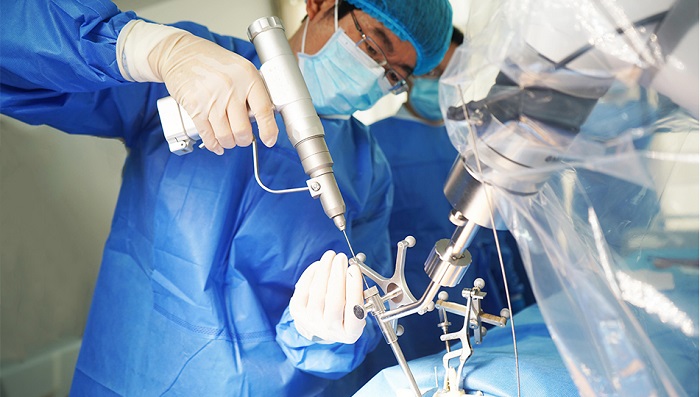
Bipolar Surgery
Introduction
Medical science has witnessed incredible advancements over the last few decades, and one of the most remarkable among them is bipolar surgery. This innovative surgical technique is transforming the way doctors perform various procedures, offering patients faster recovery, fewer complications, and higher success rates. Whether it’s used in gynecology, urology, or general surgery, bipolar technology has become a cornerstone of modern minimally invasive operations.
What is Bipolar Surgery?
Bipolar surgery refers to a technique that uses bipolar electrocautery or bipolar energy to cut tissues, control bleeding, or remove unwanted growths. Unlike traditional surgery that uses a scalpel, bipolar instruments work through electrical current — but with a major difference: the current passes only between the two tips of the surgical instrument.
This localized energy transfer minimizes the risk of burns and damage to surrounding tissues, making the procedure safer and more efficient. It is widely used in laparoscopic surgeries, neurosurgery, ENT (ear, nose, throat) operations, and gynecological procedures.
How Bipolar Surgery Works
The working mechanism of bipolar surgery is based on the principle of controlled electrical energy. A bipolar device has two electrodes — both positioned at the tip of the instrument. When electric current flows between these electrodes, it generates heat precisely where it is needed.
This heat helps cut tissue or coagulate blood vessels without affecting nearby structures. Because the current path is short and localized, there’s little risk of electric shocks or unintended burns. Surgeons can perform delicate operations with enhanced accuracy, reducing the overall trauma to the patient.
Types of Bipolar Surgery
There are various types of bipolar surgical techniques, depending on the purpose and the medical field:
- Bipolar Coagulation: Used to stop bleeding by sealing blood vessels.
- Bipolar Resection: Applied in removing tissue or tumors, often used in urology.
- Bipolar Dissection: Involves precise cutting of tissues in laparoscopic or robotic surgeries.
- Bipolar Ablation: Used to remove abnormal or unwanted tissue, such as in gynecology.
Each method offers greater control, reduced bleeding, and shorter surgery times, making it ideal for complex or minimally invasive operations.
Applications of Bipolar Surgery
Bipolar surgery is not limited to one area of medicine. Its versatility makes it useful in several specialties:
- Gynecology: Commonly used for hysteroscopic myomectomy, tubal ligation, and endometrial ablation.
- Urology: In procedures like transurethral resection of the prostate (TURP), where bipolar technology minimizes complications and improves recovery.
- Neurosurgery: Allows precise cutting and coagulation in delicate brain operations.
- ENT Surgery: Useful in tonsillectomy, nasal polyp removal, and other head and neck procedures.
- Laparoscopic Surgery: Helps control bleeding and reduce the need for open surgery.
Benefits of Bipolar Surgery
The growing popularity of bipolar surgery is due to its numerous advantages over traditional surgical methods:
- Reduced Blood Loss: The technique effectively seals blood vessels, minimizing bleeding.
- Minimal Tissue Damage: Only the targeted area is affected by heat, preserving healthy tissue.
- Lower Risk of Complications: The precise control of current reduces the risk of accidental burns or nerve injury.
- Faster Recovery: Patients experience less pain and quicker healing compared to open surgery.
- Shorter Hospital Stay: Because it is minimally invasive, patients often go home the same or next day.
- Improved Safety: Bipolar devices ensure safe energy delivery, even in wet or fluid-filled surgical environments.
Bipolar vs. Monopolar Surgery
While both bipolar and monopolar surgeries use electrical energy, they differ significantly in safety and precision.
In monopolar surgery, the electric current flows from the surgical tool through the patient’s body to a grounding pad — increasing the chance of unintended burns or interference with other medical devices.
In contrast, bipolar surgery confines the current between the two electrodes at the tip of the instrument, avoiding current flow through the body. This makes it safer for sensitive surgeries and patients with implants like pacemakers.
Technological Innovations in Bipolar Surgery
Modern bipolar devices have become more advanced, featuring temperature control, smart sensors, and ergonomic designs. Some systems use real-time feedback technology that adjusts the power output automatically to prevent overheating. Robotic-assisted bipolar instruments are also becoming popular, combining the precision of robotics with the safety of bipolar energy.
Risks and Limitations
While bipolar surgery is considered very safe, it is not completely risk-free. Some possible risks include.
However, compared to conventional methods, these risks are very low. Proper training and equipment maintenance ensure that the procedure remains safe and effective.
Recovery and Aftercare
Patients who undergo bipolar surgery usually recover much faster than those who have traditional open surgery. Post-surgery, mild discomfort, swelling, or soreness may occur, but it subsides within a few days. Doctors usually recommend:
Cost and Accessibility
The cost of bipolar surgery depends on the type of procedure, hospital, and location. While it may be slightly higher than standard methods due to advanced technology, it often reduces long-term medical expenses because of faster recovery and fewer complications. Many hospitals worldwide now offer bipolar surgery as part of their standard surgical options, making it increasingly accessible to patients.
Future of Bipolar Surgery
The future looks bright for bipolar surgical techniques. As technology continues to evolve, the focus is shifting toward robotic-assisted bipolar systems that allow surgeons to perform complex operations with even greater precision. Integration with artificial intelligence and imaging systems will further improve accuracy, safety, and patient outcomes. The ultimate goal is to make surgeries less invasive, less painful, and more effective.
Conclusion
Bipolar surgery is a shining example of how medical technology can revolutionize patient care. It combines safety, precision, and efficiency to create better outcomes and faster recovery. From gynecology and urology to neurosurgery, this technique has proven its worth across multiple medical fields. As hospitals and surgeons continue to adopt and refine this method, bipolar surgery will remain at the forefront of modern surgical innovation — offering hope, safety, and healing to patients worldwide.




